The third plenary of Intergovernmental Science-Policy Platform on Biodiversity and Ecosystem Services (IPBES) will be held from the 12.-17. January 2015 in Bonn, Germany where also EU BON partners will attend. The IPBES secretariat already released some information notes and documents for participants that plan to join the sessions. In addition to that, some working documents for IPBES-3 are released in the meantime, like the provisional agenda and others. There are also reports being published that are relevant for the work of biodiversity networks like EU BON. Interesting reports are for example the draft of the assessment on biodiversity and ecosystem services in Europe and Central Asia (where EU BON is mentioned as a relevant research network) and other working documents for the plenary.
Please find the documents under the following link that will guide you to the specific IPBES webpage: http://ipbes.net/plenary/ipbes-3.html#three
A new EU BON acknowledged paper "Advancing species diversity estimate by remotely sensed proxies: A conceptual review" has been recently published in the journal Ecological Informatics.
Abstract:
Many geospatial tools have been advocated in spatial ecology to estimate biodiversity and its changes over space and time. Such information is essential in designing effective strategies for biodiversity conservation and management. Remote sensing is one of the most powerful approaches to identify biodiversity hotspots and predict changes in species composition in reduced time and costs. This is because, with respect to field-based methods, it allows to derive complete spatial coverages of the Earth surface under study in a short period of time. Furthermore, remote sensing provides repeated coverages of field sites, thus making studies of temporal changes in biodiversity possible. In this paper we discuss, from a conceptual point of view, the potential of remote sensing in estimating biodiversity using various diversity indices, including alpha- and beta-diversity measurements.
Original Source:
Rocchini D, Hernández-Stefanoni J L, He KS (2014) Advancing species diversity estimate by remotely sensed proxies: A conceptual review. Ecological Informatics. DOI: 10.1016/j.ecoinf.2014.10.006
High-quality biodiversity data is essential for answering key questions on biodiversity in Europe, for example regarding the state and trends of species or for evaluating ecosystem services and functions on various scales. A new EU BON report "Gap analysis and priorities for filling identified gaps in data coverage and quality" evaluates the state of available biodiversity information and points out gaps of available biodiversity information sources.
The report aims to assess relevant data sources on biodiversity on a European and global scale. The assessment particularly evaluates the gaps of available biodiversity information sources and, after outlining the most important ones, identifies priorities for improving the data availability and gives recommendations of how they can be closed.
The report is divided into three main sections, starting first with an overall overview of gaps and limitations of biodiversity datasets. After outlining some general limitations of biodiversity data in Europe, the key findings from the specific analyses are summarized along with recommendations of how existing gaps can be closed. The last part presents a chapter containing the specific gap analysis for a selection of several main global and European datasets. The datasets represent some main sources for biodiversity data, either for specific realms (terrestrial, marine, freshwater), taxonomic groups, thematic fields (taxonomy, genetic databases) or networks of European test sites.
An innovative workflow reveals new research potential of the Barcode of Life Data Systems (BOLD). A recently published article in the Biodiversity Data Journal (BDJ) used specimen records downloaded from BOLD in tabular format and imported these into a human-readable text developed in manuscript within the Pensoft Writting Tool (PWT). Data were used to study the species distributions of ten Nearctic species of braconid wasps from the Microgastrinae subfamily.
 BOLD is originally designed to support the generation and application of DNA barcode data. However, the repository also holds unexplored treasures of additional data that provide unique potential for many other research uses.
BOLD is originally designed to support the generation and application of DNA barcode data. However, the repository also holds unexplored treasures of additional data that provide unique potential for many other research uses.
Currently almost 4 million sequences (over 3.4 million of them DNA barcodes) are stored in BOLD, including coverage for more than 143K animal species, 53K plant species, and 16K fungi and other species, and this impressive storage of information is continuing to grow every day.
A team of researchers, led by Dr Jose Fernandez-Triana from the University of Guelph, Canada, have now explored how the unique amount of data stored on the BOLD platform can be utilised for new research purposes. Choosing tiny parasitic wasps for their case study they selected a sample of 630 specimens and 10 North American species. Data stored on BOLD were then used to uncover a significant number of new records of locality, provinces, territories and states.
The research was then secured a fast publication via BDJ, a community peer-reviewed, open-access, comprehensive online platform, designed to accelerate publishing, dissemination and sharing of biodiversity-related data of any kind.
"Import of structured data into human-readable text is important but it does not represent the whole story. More importantly, the data can be downloaded straight from the article text by anyone for further re-use, or be automatically exported to data aggregators, such as the Global Biodiversity Information Facility (GBIF). In this way, data platforms could get more peer-reviewed content from scholarly publications and scientists will be properly credited for their efforts" said Prof. Lyubomir Penev, founder of Pensoft Publishers.
Original Source:
Fernandez-Triana J, Penev L, Ratnasingham S, Smith M, Sones J, Telfer A, deWaard J, Hebert P (2014) Streamlining the use of BOLD specimen data to record species distributions: a case study with ten Nearctic species of Microgastrinae (Hymenoptera: Braconidae). Biodiversity Data Journal 2: e4153. doi: 10.3897/BDJ.2.e4153
Additional information:
The workflow is part of the Data Publishing Toolkit elaborated within the EU FP7 funded project EU BON (Grant agreement No 308454).

An EU-BON Workshop focusing on the DINA system - "Alpha version of mobilization system – the DINA-system MS141" - was hosted the 16. to 18. September 2014 by the Swedish Museum of Natural History in Stockholm.
Target group: programmers, developers and system engineers, but the workshop was open to anybody who was interested to learn more about the DINA-system.
Content included:
- Presentations from all DINA-partners
- APIs, service oriented architecture and road map for distributed development, guidelines and principles on how to build a module and join the DINA-system
- Case studies
- Delivery options: creating installations from hosted environment, virtual machines down to source code
For program, particpants list, presentations etc please vist the DINA wiki
A memorandum of understanding has been signed between EU BON and Norwegian Institute for Nature Research (NINA). The hand over took place at the 21st GBIF Governing Board (GB21) in New Delhi (India) on 16-18 September 2014 between EU BON project co-ordinator Christoph Häuser and Roald Vang (Head of Department on Information technology) and Frank Hanssen from NINA.

IMAGE: At the handover: EU BON co-ordinator Christoph Häuser and Roald Vang (Head of Department on Information technology) and Frank Hanssen from NINA.
The Norwegian Institute for Nature Research (NINA) is Norway’s leading institution for applied ecological research, with broad-based expertise on the genetic, population, species, ecosystem and landscape level, in terrestrial, freshwater and coastal marine environments. The core activities encompass strategic ecological research integrated with long-term monitoring, as well as a variety of environmental assessments and development of methodologies. Most work is aimed at improving the understanding of biodiversity, ecosystem services, ecological processes and their main drivers to facilitate better management of ecosystem services and resources. NINA addresses a wide variety of interdisciplinary issues involving both ecologists and social scientists, and plays an important role in European and other international research cooperation.
Fauna Europaea started in 2000 as an EC-FP5 four-year project, delivering its first release in 2004. After 14 years of steady progress and successful participations in several EC projects, as a part of the EC-FP7 European Biodiversity Observation Network project (EU BON), to increase the general awareness of the work done by the contributors and to extend the general dissemination of the Fauna Europaea results, the Biodiversity Data Journal has applied its novel e-Publishing tools to prepare data papers for all 56 major taxonomic groups.
Fauna Europaea provides a public web-service with an index of scientific names (including important synonyms) of all living European land and freshwater animals, their geographical distribution at country level, and some additional information. The Fauna Europaea project covers about 230,000 taxonomic names, including 130,000 species name. This represents a huge effort by more than 400 contributing specialists throughout Europe and is a unique (standard) reference suitable for many users in science, government, industry, nature conservation and education.
'Contributio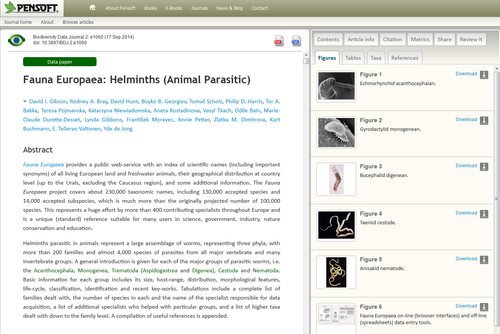 ns on Fauna Europaea' is the second series launched by the Biodiversity Data Journal after the Checklist of British and Irish Hymenoptera and the first one that embraces thematic data-papers structured in a common pattern extracted from a large database. This novel publication model will assemble in a single-issue 56 data-papers on different taxonomic groups covered by the Fauna Europaea project in the period 2000-2014 and a range of accompanying papers highlighting various aspects of this project (gap-analysis, software design, taxonomic assessments, etc.).
ns on Fauna Europaea' is the second series launched by the Biodiversity Data Journal after the Checklist of British and Irish Hymenoptera and the first one that embraces thematic data-papers structured in a common pattern extracted from a large database. This novel publication model will assemble in a single-issue 56 data-papers on different taxonomic groups covered by the Fauna Europaea project in the period 2000-2014 and a range of accompanying papers highlighting various aspects of this project (gap-analysis, software design, taxonomic assessments, etc.).
This is the first collection of data-papers of this scale. It will formalise and effectively publish the results of nearly 500 contributors building the largest European animal (taxonomic) database. The new publication model provides a reliable mechanism for citation and bibliographic indexing of large and uniformly structured databases.
"The publication of Fauna Europaea data papers brings a number of benefits for science, for example it stimulates experts to hand-over descriptive details on their groups, triggers new ways of community networking and participation, motivates experts to update their data, supports a better documentation of their achievements, including issues like 'micro-publications', and increase an ownership feeling with the associated effort" said Dr Yde de Jong, coordinator of the Fauna Europaea and Pan-European Species directories Infrastructure (PESI) projects.
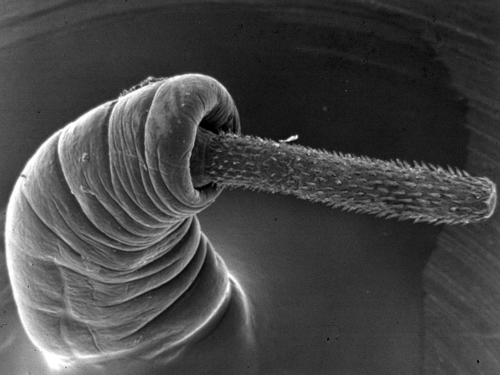 The launch of this large collection of data papers coincides with one more cutting-edge innovation of the Biodiversity Data Journal, the publication of an API, a first of its kind, to import complex and data-rich manuscripts, which include text, data, images, in-text citations, references, in fact anything that a manuscript may contain.
The launch of this large collection of data papers coincides with one more cutting-edge innovation of the Biodiversity Data Journal, the publication of an API, a first of its kind, to import complex and data-rich manuscripts, which include text, data, images, in-text citations, references, in fact anything that a manuscript may contain.
"I am happy that these exciting innovations coincided with the first birthday of the Biodiversity Data Journal. Just a year ago we launched this new concept with the motto: Making your data count! These novel approaches and tools are an excellent example how our concept evolved!" comments Prof. Lyubomir Penev, Managing Director of Pensoft Publishers.
Original Sources:
de Jong Y, Verbeek M, Michelsen V, Bjørn P, Los W, Steeman F, Bailly N, Basire C, Chylarecki P, Stloukal E, Hagedorn G, Wetzel F, Glöckler F, Kroupa A, Korb G, Hoffmann A, Häuser C, Kohlbecker A, Müller A, Güntsch A, Stoev P, Penev L (2014) Fauna Europaea – all European animal species on the web. Biodiversity Data Journal 2: e4034. doi: 10.3897/BDJ.2.e4034
Gibson D, Bray R, Hunt D, Georgiev B, Scholz T, Harris P, Bakke T, Pojmanska T, Niewiadomska K, Kostadinova A, Tkach V, Bain O, Durette-Desset M, Gibbons L, Moravec F, Petter A, Dimitrova Z, Buchmann K, Valtonen E, de Jong Y (2014) Fauna Europaea: Helminths (Animal Parasitic). Biodiversity Data Journal 2: e1060. doi: 10.3897/BDJ.2.e1060
The classical treatise "Flora of Northumberland and Durham" by Nathaniel John Winch is re-published through the innovative Advanced Books platform as an example of combining modern information technology together with historical scholarship to create a new sort of resource and data re-use. This publication will be supporting ongoing research on the botany of the region, which can be seen as a model for other regions in Europe.
The on-line semantically enriched re-publication marries the meticulous detail of old books with the interconnectedness of the internet bringing advantages of the digitization and markup efforts such as data extraction and collation, distribution and re-use of content, archiving of different data elements in relevant repositories and so on.
"Historic biodiversity literature is not just of cultural interest, it can be used to chart biogeographic change and help us understand the impacts of environmental change on biodiversity. Even if we are trying to predict future scenarios for biodiversity, understanding the changes of the past will help understand the changes we should expect in the future" said Dr Quentin Groom from the Meise Botanical Garden, Belgium, who initiated the project and marked up the original text.
 The North-east of England has seen many changes since the publication of Winch's Flora. In the 19th Century the area was a powerhouse of the industrial revolution. It was an important coal mining area and significant for the production of iron and steel. It was also a centre for industries such as shipbuilding and engineering. In contrast the uplands in the west of the region were some of the most isolated areas in England, covered in blanket bog and rarely visited.
The North-east of England has seen many changes since the publication of Winch's Flora. In the 19th Century the area was a powerhouse of the industrial revolution. It was an important coal mining area and significant for the production of iron and steel. It was also a centre for industries such as shipbuilding and engineering. In contrast the uplands in the west of the region were some of the most isolated areas in England, covered in blanket bog and rarely visited.
Since that time heavy industry and mining have declined, but the population has continued to grow. Agriculture and forestry have become mechanized changing the countryside perhaps beyond the recognition of Winch. Many of the plants and localities he mentions have disappeared and a large number of new species have been introduced. The local botanists are still very active in the region. With GPS systems and modern maps they are mapping the region's flora in ever more detail.
The extensive efforts of Quentin Groom from the Botanic Garden Meise and editor of this re-publication combined with the cutting-edge technologies for semantic enhancements used by Pensoft's Advanced Books platform, have resulted in additional details including links to the original citations and coordinates of the mentioned localities. In some cases the habitat that Winch described for a locality differs dramatically from what can be found in the same location nowadays.
The flora, for example, frequently mentions Prestwick Carr, an area of lowland bog, once full of rare species. Sadly it was largely drained just thirty years after the publication of the flora. Yet in recent years the Northumberland Wildlife Trust has been working to restore the bog to its former glory. "When reading Winch's flora, it is easy to see what has been lost, but more importantly what remains to be conserved", comments Groom.
The re-publication of Winch's flora is just one step towards fully understanding all the impacts on wild plants of all the environmental changes that have occurred since the 19th century. Nevertheless, digitization of this flora not only tells us about plants but also about the history of science. Between the lines of this flora one can see a rudimentary understanding of ecology and the beginnings of research on phytogeography.
Consider that in 1831 Charles Darwin set sail on the Beagle, collecting and cataloguing biodiversity around the world, much as Winch had done in North-east England over the preceding 30 years. Field botany at the time was not just a hobby, but a serious pursuit that led to many new discoveries.
Understanding the causes of biodiversity change is only possible if you have data over a long period. The North-east England has an enviable botanical history dating back to William Turner (1508-1568), the so-called, Father of English Botany, who came from Morpeth in Northumberland. Yet he was only the first in a long list of North-eastern botanists, including John Wallis (1714-1793), Nathaniel John Winch (1769-1838), John Gilbert Baker (1834-1920), George Ralph Tate (1805-1871), Gordon Graham and George Swan (1917). Their publications and the works of many others have contributed to a large corpus of literature on the region's flora.
The third issue of the EU BON newsletter is now out.
This issue contains information about our new associated partners, alongside news from the project, interviews and articles from international and project meetings, as well as announcements for future events of interest.
To download the newsletter, please click on the image below.
It is also available for download in the project’s Media Center alongside the previous 2 issues.
EU BON is happy to announce that Memoranda of Understanding have been signed with four new associated partners. The EU BON family is now joined by DataOne (Observation Network for Earth), USA; Fondation pour la Recherche sur la Biodiversité (FRB) / ECOSCOPE, France; Atlas Florae Europaeae (AFE), Finland; and the Natural Environment Centre / SYKE (Finnish Environment Institute), Finland. Welcome to all!
DataOne (Observation Network for Earth)
 DataONE is the foundation of new innovative environmental science through a distributed framework and sustainable cyberinfrastructure that meets the needs of science and society for open, persistent, robust, and secure access to well-described and easily discovered Earth observational data.
DataONE is the foundation of new innovative environmental science through a distributed framework and sustainable cyberinfrastructure that meets the needs of science and society for open, persistent, robust, and secure access to well-described and easily discovered Earth observational data.
Fondation pour la Recherche sur la Biodiversité (FRB) / ECOSCOPE
 ECOSCOPE is a national network for long-term observation of biodiversity supported by the French Alliance for Research in Environment. ECOSCOPE aims at coordinating and reinforcing biodiversity observatories through specific actions to contribute to national and global efforts 1 / to support research in understanding and anticipating state and changes in biodiversity and associated ecosystem services and 2 / to provide information and synthesis to support decision making. It has been labelled BON in 2012.
ECOSCOPE is a national network for long-term observation of biodiversity supported by the French Alliance for Research in Environment. ECOSCOPE aims at coordinating and reinforcing biodiversity observatories through specific actions to contribute to national and global efforts 1 / to support research in understanding and anticipating state and changes in biodiversity and associated ecosystem services and 2 / to provide information and synthesis to support decision making. It has been labelled BON in 2012.
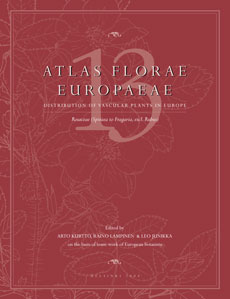 Atlas Florae Europaeae (AFE) is a running long-term programme for mapping the distribution of vascular plants in Europe. The project was launched already in 1965 as a collaborative effort of European botanists and since then the Secretariat was established at the Botanical Museum of the Finnish Museum of Natural History, Helsinki.
Atlas Florae Europaeae (AFE) is a running long-term programme for mapping the distribution of vascular plants in Europe. The project was launched already in 1965 as a collaborative effort of European botanists and since then the Secretariat was established at the Botanical Museum of the Finnish Museum of Natural History, Helsinki.
The original aim of the AFE is to offer complementary maps with taxonomic notes of species and subspecies for the published Flora Europaea.
Natural Environment Centre / SYKE (Finnish Environment Institute)
 The Finnish Environment Institute (SYKE) promotes the conservation of biodiversity by various measures, e.g. by assessments of the conservation status of species and natural habitats or by research on methods of management and restoration of habitats. An important field of research is the significance of ecosystem services and their interactions with biodiversity. SYKE's tasks also include finding solutions to problems with invasive species, assessment of the environmental impacts of genetically modified organisms and permits for international trade in endangered species.
The Finnish Environment Institute (SYKE) promotes the conservation of biodiversity by various measures, e.g. by assessments of the conservation status of species and natural habitats or by research on methods of management and restoration of habitats. An important field of research is the significance of ecosystem services and their interactions with biodiversity. SYKE's tasks also include finding solutions to problems with invasive species, assessment of the environmental impacts of genetically modified organisms and permits for international trade in endangered species.
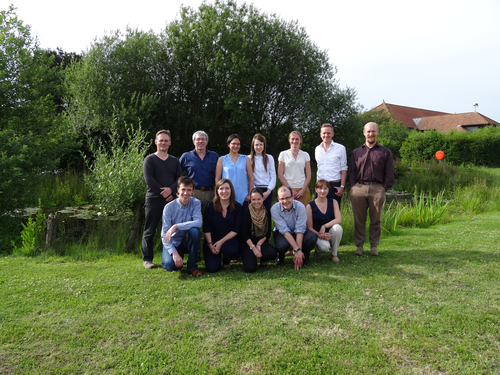

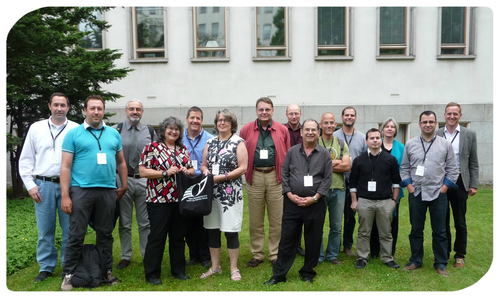 Several EU BON partners of different work packages and associated partners joined the workshop and engaged in the discussion to find ways how the EU BON project and its data could be linked to the DataONE Infrastructure. As DataONE also builds a network of integrating biodiversity datasets from various sources and locations and already developed a workable technological infrastructure, further collaboration and the implementation of an exchange of biodiversity information is foreseen.
Several EU BON partners of different work packages and associated partners joined the workshop and engaged in the discussion to find ways how the EU BON project and its data could be linked to the DataONE Infrastructure. As DataONE also builds a network of integrating biodiversity datasets from various sources and locations and already developed a workable technological infrastructure, further collaboration and the implementation of an exchange of biodiversity information is foreseen.Picture: Participants of the Workshop (from UEF, CSIC, MRAC, GlueCAD, HCMR, MfN, Univ. Granada, SYKE) and members of DataONE after the first day meeting, Helsinki, Finland.
 CETAF is a networked consortium of scientific institutions in Europe formed to promote training, research and understanding of systematic biology and palaeobiology, Together, CETAF institutions hold very substantial biological (zoological and botanical), palaeobiological, and geological collections and provide the resources necessary for the work of thousands of researchers in a variety of scientific disciplines.
CETAF is a networked consortium of scientific institutions in Europe formed to promote training, research and understanding of systematic biology and palaeobiology, Together, CETAF institutions hold very substantial biological (zoological and botanical), palaeobiological, and geological collections and provide the resources necessary for the work of thousands of researchers in a variety of scientific disciplines.



 RSS news
RSS news
 Agenda CitizenScience_roundtable_EUBON
Agenda CitizenScience_roundtable_EUBON

